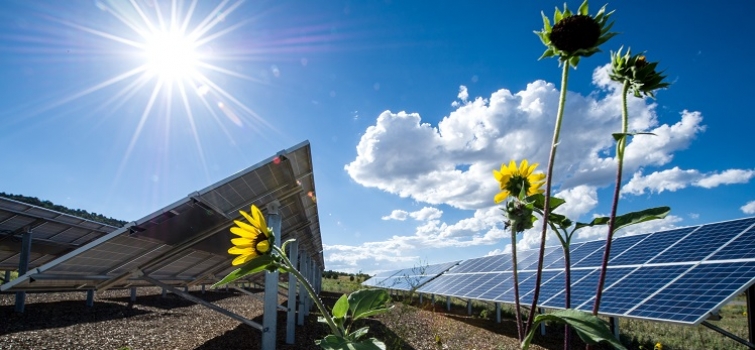Renewable energy production has outperformed natural gas resources, contributing over half of new generating capacity in the U.S in 2014, reports Federal Energy Regulatory Commission’s (FERC).
Various renewable energy sources such as biomass, geothermal, hydroelectric, solar and wind have contributed 49.81 percent with 7, 663 MW of new electrical generation in 2014.
Meanwhile natural gas accounted for 48.65 percent, with 7,485 MW new electrical generation capacities.
In 2013, natural gas accounted for 46.44 percent (7,378 MW) of new electrical generating capacity while renewables accounted for only 43.03 percent (6,837 MW).
New renewable energy capacity in 2014 is 12.08 percent more than that added in 2013.
New wind energy facilities constituted nearly 26.52 percent of added capacity (4,080 MW) in 2014 and solar power provided 20.40 percent (3,139 MW).
Other renewables like biomass (254 MW), hydropower (158 MW), and geothermal (32 MW) together provided almost 2.89 percent.
In 2014, only a single coal facility (106 MW) was commissioned whereas nuclear power got added up by 71MW only due to a plant upgrade; and only 15 units of oil, totaling 47 MW, were added.
ALSO READ Solar Energy in America Continues Rapid Growth: Rhone Resch
This makes capacity addition from renewable energy sources in 2014 around 34 times more than coal, nuclear and oil combined, which is 72 times that from coal, 108 times that from nuclear, and 163 times that from oil.
The total renewable energy sources now account for 16.63 percent of entire installed operating generating capacity in the U.S.
Out of this, water constitutes 8.42 percent, wind – 5.54 percent, biomass – 1.38 percent, solar – 0.96 percent and geothermal steam – 0.33 percent.
Renewable energy capacity now records higher production rate than that of nuclear (9.14 percent) and oil (3.94 percent) combined.
Sabeena Wahid
editor@greentechlead.com

